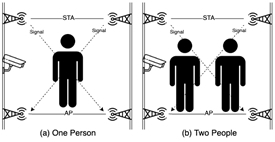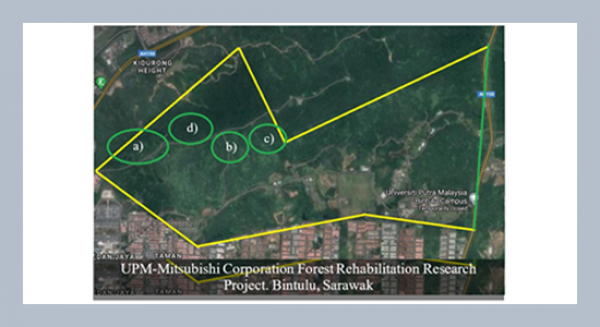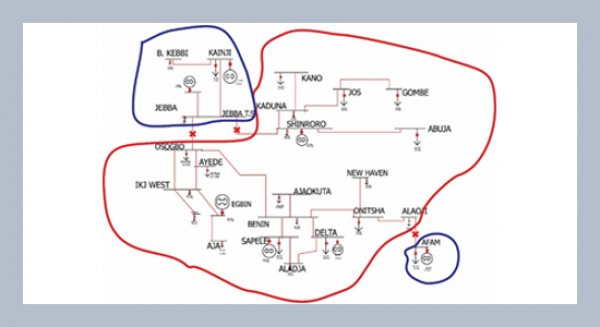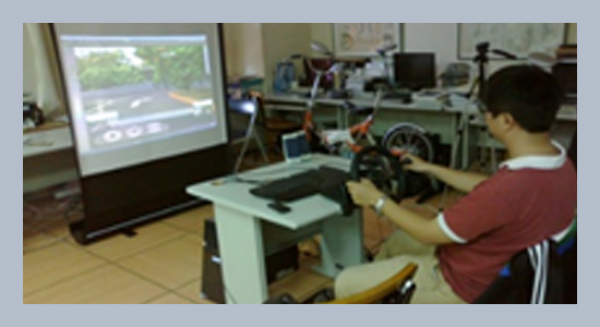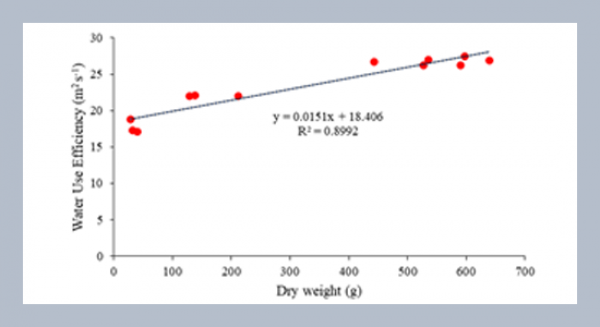REFERENCES
- Allen, J.B., Rabiner, L.R. 1977. A unified approach to short-time fourier analysis and synthesis. Proceedings of the IEEE, 65, 1558–1564.
- Azizi, S., Nair, G., Rabiee, R., Olofsson, T. 2020. Application of internet of things in academic buildings for space use efficiency using occupancy and booking data. Building and Environment, 186, 107355.
- Baba, T. 2012. Time-frequency analysis using short-time fourier transform. The Open Acoustics Journal, 5, 1–10.
- Chen, Z., Zhang, L., Jiang, C., Cao, Z., Cui, W. 2019. WiFi CSI-based passive human activity recognition using attention-based BLSTM. IEEE Transactions on Mobile Computing, 18, 2714–2724.
- Cominelli, M., Gringoli, F., Restuccia, F. 2023. Exposing the CSI: A systematic investigation of CSI-based Wi-Fi sensing capabilities and limitations. Proceedings of the 2023 IEEE International Conference on Pervasive Computing, 1–8.
- Das, S., Adhikary, A., Laghari, A.A., Mitra, S. 2023. EldoCare: EEG with kinect sensor based Telehealthcare for the disabled and the elderly. Neuroscience Informatics, 100130.
- Daware, T., Dhote, T. 2023. Enhancing public safety through real-time crowd density analysis and management. Proceedings of the 5th International Conference on Inventive Research in Computing Applications (ICIRCA), 1040–1046.
- Ding, J., Wang, Y. 2019. WiFi CSI-based human activity recognition using deep recurrent neural network. IEEE Access, 7, 174257–174269.
- Espinosa, Á., Lopez Ruiz, J., Mata Mata, F., Espinilla, M. 2021. Application of IoT in healthcare: Keys to implementation of the sustainable development goals. Sensors, 21, 2330.
- Fitwi, A., Chen, Y., Sun, H., Harrod, R. 2021. Estimating interpersonal distance and crowd density with a singleedge camera. Computers, 10, 143.
- Ge, Y., Taha, A., Shah, S.A., Dashtipour, K., Zhu, S., Cooper, J., Imran, M.A. 2023. Contactless WiFi sensing and monitoring for future healthcare: Emerging trends, challenges, and opportunities. IEEE Reviews in Biomedical Engineering, 16, 171–191.
- Jia, X., Feng, Q., Fan, T., Lei, Q. 2012. RFID technology and its applications in Internet of Things (IoT). IEEE Pervasive Computing, 5, 1282–1285.
- Kwon, H., An, S., Lee, H.-Y., Cha, W.C., Kim, S., Cho, M., Kong, H.-J. 2024. Beyond surveillance: Privacy, ethics, and regulations in face recognition technology. Frontiers in Big Data, 7, 1337465.
- Laghari, A.A., Yin, S. 2022. How to collect and interpret medical pictures captured in highly challenging environments that range from nanoscale to hyperspectral imaging. Current Medical Imaging, 20, 281222212228.
- Laghari, A.A., Estrela, V.V., Li, H., Shoulin, Y., Khan, A.A., Anwar, M.S., Wahab, A., Bouraqia, K. 2024. Quality of experience assessment in virtual/augmented reality serious games for healthcare: A systematic literature review. Technology and Disability Preprint, 1–12.
- Laghari, A.A., Sun, Y., Alhussein, M., Aurangzeb, K., Anwar, M.S., Rashid, M. 2023. Deep residual-dense network based on bidirectional recurrent neural network for atrial fibrillation detection. Scientific Reports, 13, 15109.
- Lei, Z., Rong, B., Jiahao, C., Yonghong, Z. 2024. Smart city healthcare: Non-contact human respiratory monitoring with WiFi-CSI. IEEE Transactions on Consumer Electronics, 70, 333–341.
- Lin, Q., Yue, Y. 2015. Device-free passive human detection using Wi-Fi technology: Current state and future trend. Proceedings of the IEEE 12th International Conference on Ubiquitous Intelligence and Computing, 1717–1723.
- Liu, J., Liu, H., Chen, Y., Wang, Y., Wang, C. 2020. Wireless sensing for human activity: A survey. IEEE Communications Surveys and Tutorials, 22, 1629–1645.
- Liu, M., Lin, Z., Xiao, P., Xiang, W. 2023. Human biometric signals monitoring based on WiFi channel state information using deep learning. arXiv preprint, arXiv:2203.03980.
- Liu, S., Zhao, Y., Chen, B. 2017. WiCount: A deep learning approach for crowd counting using WiFi signals. Proceedings of the IEEE International Symposium on Parallel and Distributed Processing with Applications and IEEE International Conference on Ubiquitous Computing and Communications (ISPA/IUCC), 967– 974.
- Ma, Y., Arshad, S., Muniraju, S., Torkildson, E., Rantala, E., Doppler, K., Zhou, G. 2021. Location and personindependent activity recognition with WiFi, deep neural networks, and reinforcement learning. ACM Transactions on Internet of Things, 2, 1–25.
- Moshiri, P.F., Shahbazian, R., Nabati, M., Ghorashi, S.A. 2021. A CSI-based human activity recognition using deep learning. Sensors, 21, 7225.
- Narayana, S., Prasad, R.V., Rao, V.S., Prabhakar, T.V., Kowshik, S.S., Iyer, M.S. 2015. PIR sensors: Characterization and novel localization technique. IEEE Sensors Journal, 14, 142–153.
- Qian, K., Wu, C., Yang, Z., Liu, Y., Jamieson, K. 2017. Widar: Decimeter-level passive tracking via velocity monitoring with commodity Wi-Fi. Proceedings of the 18th ACM International Symposium on Mobile Ad Hoc Networking and Computing, 1–10.
- Qian, K., Wu, C., Zhang, Y., Zhang, G., Yang, Z., Liu, Y. 2018. Widar2.0: Passive human tracking with a single Wi-Fi link. IEEE Sensors Journal, 16, 350–361.
- Rangdale, S., Jadhav, N., Solav, S., Gayake, N., Nanware, S., Dipmala, S., Tekade, P. 2023. A survey on crowd detection and management using deep learning. Proceedings of the International Conference on Computer Vision and Internet of Things (ICCVIoT'23), Coimbatore, India, 224–232.
- Shah, A.S., Nasir, H., Fayaz, M., Lajis, A., Shah, A. 2019. A review on energy consumption optimization techniques in IoT-based smart building environments. Information, 10, 108.
- Shi, Z., Cheng, Q., Zhang, J.A., Xu, R.Y.D. 2022. Environment-robust WiFi-Based human activity recognition using enhanced CSI and Deep learning. IEEE Internet of Things Journal, 9, 24643–24654.
- Sun, J., Bian, X., Li, M. 2024. Non-contact heart rate monitoring method based on Wi-Fi CSI signal. Sensors, 24, 2111.
- Wang, C.-Y., Lin, F.-S. 2024. AI-driven privacy in elderly care: Developing a comprehensive solution for camerabased monitoring of older adults. Applied Sciences, 14, 4150.
- Wang, D., Yang, J., Cui, W., Xie, L., Sun, S. 2021. Multimodal CSI-based human activity recognition using GANs. IEEE Internet of Things Journal, 8, 17345–17355.
- Wang, X., Yang, C., Mao, S. 2020. Resilient respiration rate monitoring with realtime bimodal CSI data. IEEE Sensors Journal, 20, 10187–10198.
- Want, R. 2006. An introduction to RFID technology. IEEE Pervasive Computing, 5, 25–33.
- Winkler, T., Rinner, B. 2014. Security and privacy protection in visual sensor networks: A survey. ACM Computing Surveys, 47, 1–42.
- Wu, D., Zeng, Y., Gao, R., Li, S., Li, Y., Shah, R.C., Zhang, D. 2023. WiTraj: Robust indoor motion tracking with WiFi signals. IEEE Transactions on Mobile Computing, 22, 3062–3078.
- Xiao, F., Guo, Z., Ni, Y., Xie, X., Maharjan, S., Zhang, Y. 2019. Artificial intelligence empowered mobile sensing for human flow detection. IEEE Network, 33, 78–83.
- Zeng, Y., Pathak, P. H., Mohapatra, P. 2016. WiWho: WiFibased person identification in smart spaces. Proceedings of the 15th ACM/IEEE International Conference on Information Processing in Sensor Networks (IPSN), 1– 10.
- Zhang, J., Li, Y., Xiong, H., Dou, D., Miao, C., Zhang, D. 2022. HandGest: Hierarchical sensing for robust-in-theair handwriting recognition with commodity WiFi devices. IEEE Internet of Things Journal, 9, 19529– 19544.
- Zhou, H., Zhang, Y., Temiz, M. 2023. High-resolution indoor sensing using channel state information of WiFi networks. Electronics, 12, 3931.
